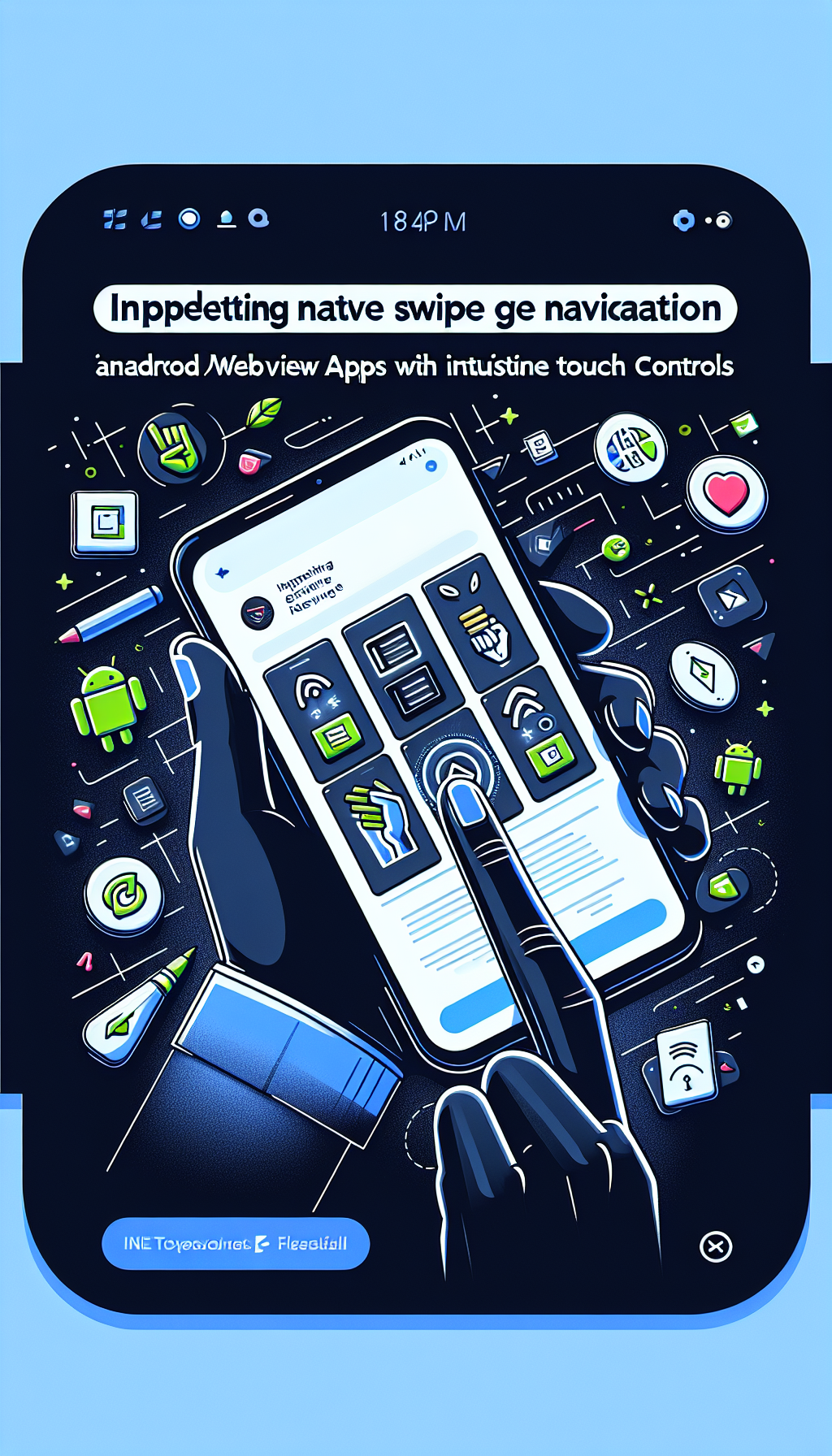
Today’s mobile users expect smooth, intuitive navigation when interacting with Android apps. Swipe gesture navigation has become a standard user interaction pattern, significantly improving the overall user experience (UX). Specifically, integrating native swipe gestures into Android WebView-based apps can considerably enhance usability, making your application feel more natural and responsive.
The Importance of Native Swipe Gestures in Android Apps
User engagement heavily relies on the ease and intuitiveness of app navigation. When users can naturally navigate between pages by swiping left or right, the interaction feels seamless, leading to higher retention rates. Users accustomed to native Android apps expect the same fluid touch controls within WebView-based applications.
Traditional web-based controls like buttons or links are still essential. However, incorporating native swipe gesture navigation helps bridge the gap between web apps and fully native applications, offering users an authentic mobile experience.
Implementing Swipe Gestures in Android WebView
Creating swipe gesture capability within Android WebView can initially seem challenging but becomes straightforward once you know which steps to follow. Here is a concise guide on implementing native swipe gesture navigation effectively:
Step 1: Set Up Gesture Detection
Android provides powerful built-in classes such as GestureDetector that recognize various types of swipe gestures. First, define your gesture detector and link it with your WebView component:
GestureDetector gestureDetector = new GestureDetector(this, new GestureDetector.SimpleOnGestureListener() {
@Override
public boolean onFling(MotionEvent event1, MotionEvent event2, float velocityX, float velocityY) {
float diffX = event2.getX() - event1.getX();
if (Math.abs(diffX) > Math.abs(event2.getY() - event1.getY())) {
if (diffX > 100) { // Right swipe
if (webView.canGoBack()) webView.goBack();
} else if (diffX < -100) { // Left swipe
if (webView.canGoForward()) webView.goForward();
}
return true;
}
return false;
}
});
Step 2: Attach Gesture Detector to WebView
To enable gesture detection in your WebView, override the onTouchEvent() method of your WebView instance:
webView.setOnTouchListener(new View.OnTouchListener() {
public boolean onTouch(View v, MotionEvent event) {
return gestureDetector.onTouchEvent(event);
}
});
Step 3: Ensure Smooth Transition Animations
To further enhance the UX, consider adding transition animations after detecting swipe gestures. Android provides simple tools to create professional-looking transitions, such as Activity-level or Fragment-level animations, creating an even smoother and premium look for your app.
Quickly Converting Websites into Apps using WebViewGold
If you aim to rapidly convert your existing website into an Android application without extensive programming efforts, consider leveraging solutions like WebViewGold. WebViewGold simplifies transforming any website into a fully functional Android app quickly and easily, automatically adding support for native features such as swipe gestures. This tool enables developers and non-developers alike to offer their users intuitive, native-like experiences quickly, without complex code implementations.
Optimizing Your App for a Seamless User Experience
Beyond simply enabling native swipe gestures, optimizing your WebView-based Android app includes careful consideration of performance, responsiveness, and content loading speed. Optimize your resources, streamline your content, and handle caching properly to deliver lightning-fast performance. Complement these aspects with intuitive native swiping capabilities to enhance accessibility and elevate user satisfaction.
Enhance UX with Swipe Gesture Navigation Today

Leave a Reply